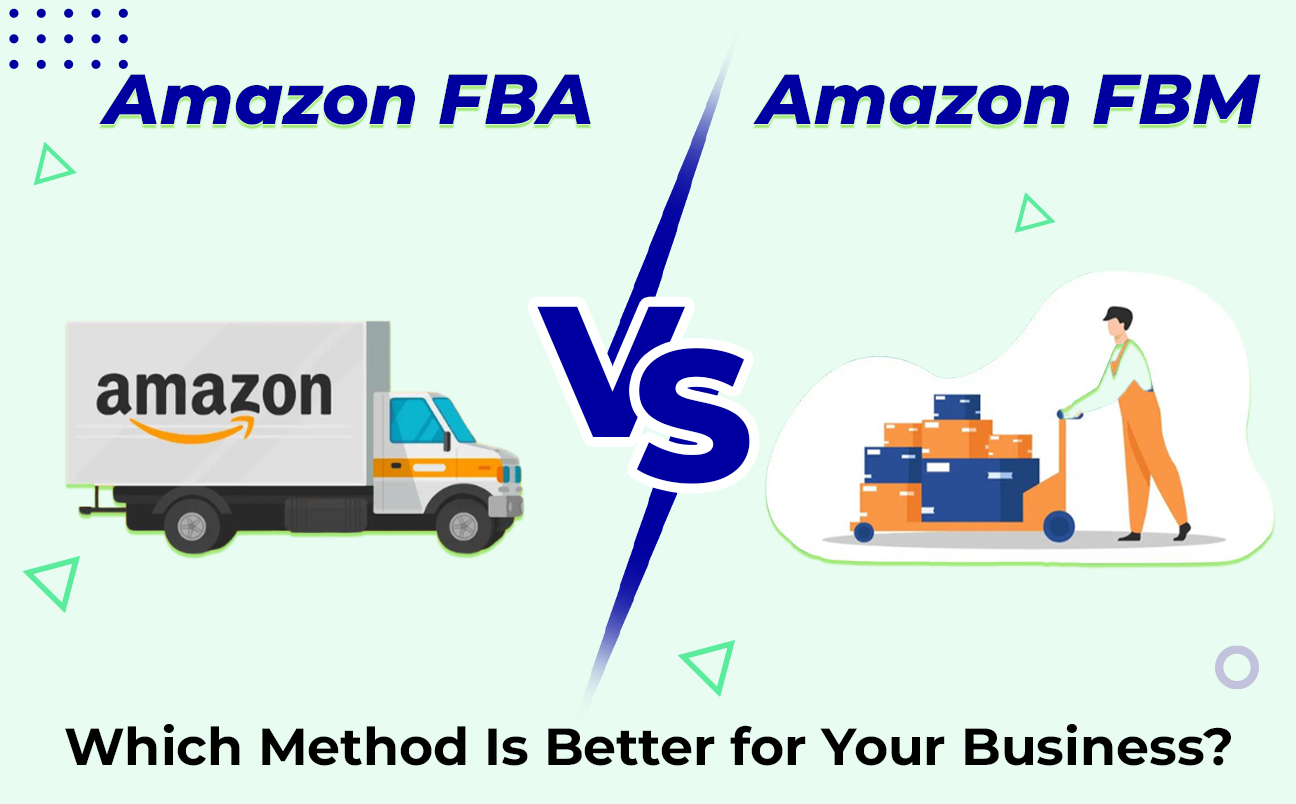Online sellers aiming to leverage Amazon’s vast marketplace often face a pivotal decision – should they utilize Amazon FBA (Fulfillment by Amazon) or FBM (Fulfillment by Merchant)? Evaluating the distinctions between Amazon FBA vs. FBM reveals how each model can potentially catalyze growth if matched strategically with your capabilities. This guide dives into the pros, cons, and vital factors in choosing between Amazon FBA vs. FBM, providing clarity for entrepreneurs seeking to thrive on Amazon.
Demystifying the Difference Between Amazon FBA vs. FBM
Navigating Amazon’s fulfillment options landscape can seem complex initially. Still, grasping the difference between Amazon FBA vs. FBM is key to mapping the optimal path ahead.
Amazon FBA – Effortless Shipping Meets Stringent Requirements
Amazon FBA enables sellers to leverage the e-commerce giant’s expert warehousing and shipping infrastructure. Sellers send inventory to Amazon’s vast fulfillment centres and pay fees for services like storage, packing, and delivery coordination. A core benefit is Prime eligibility – FBA products can tap into Amazon’s 100+ million Prime members through free two-day shipping.
Amazon FBM – Greater Control with Heightened Responsibility
Amazon FBM, in contrast, puts inventory management, order processing, and shipping operations entirely in the seller’s hands. Sellers list and sell on Amazon but handle fulfillment themselves or via a third party. This brings more control over branding and the customer experience. Still, it also translates to a greater workload as sales volumes grow.
Comparing the Pros and Cons of Amazon FBA and FBM
Both FBA and FBM come with distinct pluses and minuses to evaluate against your business needs and capabilities.
Advantages of Amazon FBA:
- Access to Prime Members: Opens the door to Amazon’s huge base of Prime customers, which can skyrocket sales potential.
- Reduced Logistical Headache: Amazon handles the grunt work of storing inventory, packing orders, and shipping them out. One less thing for sellers to worry about.
- Better Customer Service: Amazon’s CS team takes care of product questions, returns, and issues for you. Makes life easier for both sellers and customers.
- Improved Visibility: FBA items tend to rank higher in search since Prime members see them first. More eyeballs on your products.
Downsides of Amazon FBA:
- Loss of Control: Amazon takes over shipping times, branding, etc once your items hit their fulfillment centre. Sellers cede control.
- Rising Costs: Storage, fulfillment and other FBA fees can eat into profits, especially for cheaper items. The expenses add up.
- Burdensome Preparation: Amazon forces sellers to follow strict labeling, prep and packaging rules for FBA items. More work upfront.
Benefits of Amazon FBM:
- Customized Branding: Sellers can directly manage packaging and use it to build their brand. Personal touch.
- Lower Fees: Skipping FBA costs can really boost profitability for high-volume or big/heavy products. Savings add up.
- Direct Customer Bonding: Handling orders yourself lets you build relationships with customers. Personal connections.
- Inventory Insight: With FBM, sellers can closely track stock levels and make changes fast. Stay nimble.
Challenges of Amazon FBM:
- Bigger Workload: Doing your own fulfillment means more hours spent on shipping orders as sales increase. Sweat equity.
- No Prime Access: FBM items aren’t Prime eligible, so you lose out on those juicy Prime customer sales. Major disadvantage.
- More Customer Service: Sellers have to handle all product Qs, returns, and issues themselves. Time-consuming.
- Logistics Pitfalls: Warehouse mistakes can cause stockouts or waste. More chances for errors.
Key Factors in Determining Amazon FBA vs. FBM
Choosing between the two models involves evaluating a matrix of factors:
- Business Size and Structure – Lean startups may lack bandwidth for FBM. However, established firms can leverage their fulfillment ops and save via FBM.
- Inventory Profile – Slow-moving or bulky items incur high FBA fees so FBM may be more profitable. Fast-selling products benefit from FBA’s Prime access.
- Customer Experience Priorities – Brands focused on white-glove service may choose FBM for direct customer interactions—those prioritizing convenience benefit from FBA’s seamless fulfillment.
- Future Goals and Priorities – Is Prime access critical for growth? Are margins or branding control more important? Aligning with long-term goals helps guide the FBA vs. FBM decision.
- Monitoring the KPIs – What are KPIs? Closely tracking key data like sales velocity, customer reviews, returns and profitability by product provides insights to guide ongoing FBA vs. FBM choices.
Case Studies: FBA and FBM Success Stories
FBA Case Study: Pet Care Company Growth
PawPosse, a pet accessory company, leveraged Amazon FBA as sales exploded. By letting Amazon handle logistics, they focused on product development and marketing. FBA provided cost-efficiency, sped up order processing, and enabled Prime delivery. The results? A 322% annual revenue increase.
FBM Case Study: Furniture Brand Preserves Margins
MadeBig, a furniture brand, chose FBM to maintain packaging control and inventory flexibility. They preserved margins by keeping fulfillment in-house and avoiding FBA fees on bulky items. Their white-glove delivery service enhanced customer loyalty. They grew revenue by 29% last year by focusing on branding and the customer experience.
Conclusion – Choose the Path That Fits Your Needs
The Amazon FBA vs. FBM decision has vital implications for the sellers in the marketplace. While FBA offers turnkey logistics and Prime access, FBM offers greater control and potential cost savings. Many successful sellers leverage a hybrid, utilizing FBA for rapidly moving products but keeping bulky or specialized items in FBM.
For entrepreneurs seeking to build their brand on Amazon, uncovering the perfect balance between FBA and FBM is imperative. With the right strategy customized to your needs, you can benefit from Amazon’s platform while sustaining your competitive advantage. Collaborating with e-commerce specialists like HRL Infotechs, who offer end-to-end seller coaching and Amazon Account Management by experts, can help steer the complexities of the FBA vs. FBM decision and set your brand apart from the competition, and up for long-term success.
